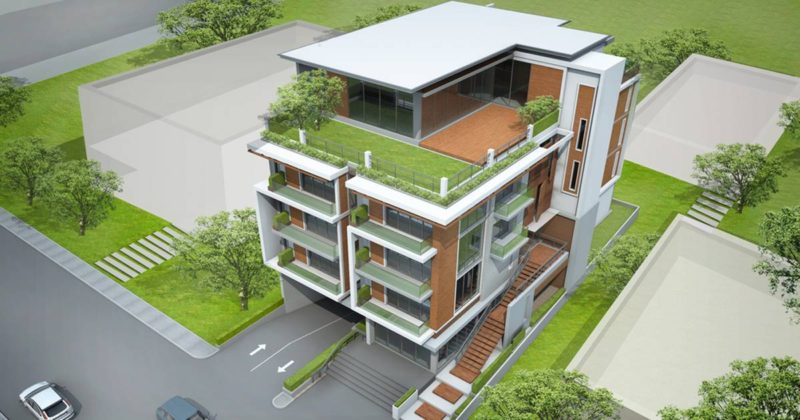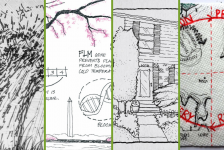In this article, we look at how architecture can possibly combat air pollution and look at what the results of such solutions look like. For decades scientists, urban planners and multiple other disciplines have been looking for ways to reduce air pollution in cities. Lately we’ve seen smarter cars, more bicycle paths, innovative transportation methods, and a surplus of propaganda promoting the benefits of walking whenever possible. While all of these incentives have become part of the strategy to reduce smog in larger cities, architects may have found a better solution.
Can Architecture Combat Air Pollution?
The Manuel Gea Gonzalwz Hospital in Mexico City fights pollution by having a veil like structure coated with titanium dioxide which helps break down pollutants like nitrogen oxide. Essentially when the titanium dioxide is exposed to light, its electrons interact with water to release pollutant-busting free radicals. These radicals break down any pollutant particulate on the coated panels and attack airborne particles, too. What makes this pollution busting strategy unique is that the coating can be applied to a variety of surfaces. The Musee du Quai Branly in Paris tackles pollution with a living wall. The wall follows the properties of photosynthese meaning that is absorbs carbon dioxide while emitting oxygen. WATCH >>> 11 Insane Futuristic Architectural Designs
The greatest benefit to this approach is that it can be implemented in any part of the city to provide residents with better air-quality. Perhaps taking the green wall to a whole new level, Milan’s Bosco Verticale will be covered in approximately 730 trees, 11,000 ground-cover plants, and 5,000 shrubs. If you’re interested in reading more about this environmental initiative, read our article Forests in the Sky? While it’s currently only a concept, The Hyper Filter Skyscraper is tackling the threat of environmental pollution by not only inhaling carbon dioxide, pollutants and greenhouse gases but also exhaling concentrated oxygen. This process is achieved by the long pipe filters which ensure that the air is cleaned while the harmful substances are stored for use in the chemical industry. The Congress Gateway Towers in Chicago propose a complex air filtration system. The C02 is first adsorbed at the crown of the tower by carbon scrubbers and then by algae growing inside the building. The algae is then processed into biofuels to provide energy for the building residents’ clean vehicles. ________________________________________ Emily Matlovich is the writer for CADdetails’ blog Design Ideas for the Built World. The blog aims to inspire ideas for design professionals and is your source of information about the latest cutting edge projects, innovative product designs, and updates on industry trends. It is an extension of CADdetails which is the leading provider of manufacturer-specific building product information, delivering high quality planning documents to architects, engineers, contractors, and other design industry professionals throughout North America. Their mission is to help bring design projects to life by connecting the AEC industry with high-quality CAD drawings, 3D models, BIM files, specifications, images, projects and related documents from reputable manufacturers across the continent. All of their digital content is available for download free of charge. Recommended Reading:
- Becoming an Urban Planner: A Guide to Careers in Planning and Urban Design by Michael Bayer
- Sustainable Urbanism: Urban Design With Nature by Douglas Farrs
- eBooks by Landscape Architects Network
Featured image: shutterstock.com
Published in Blog









